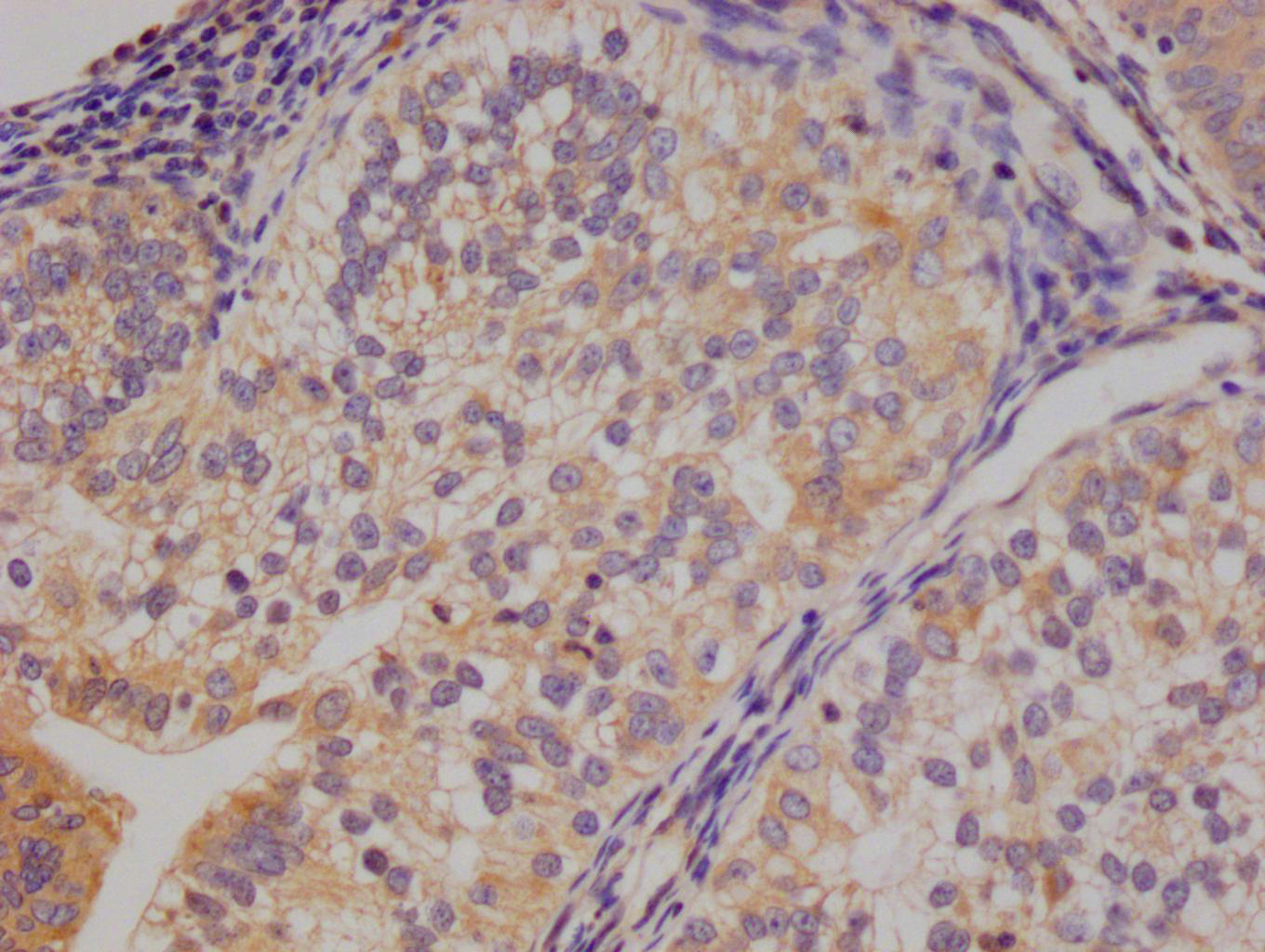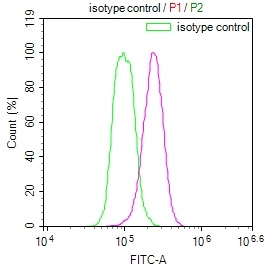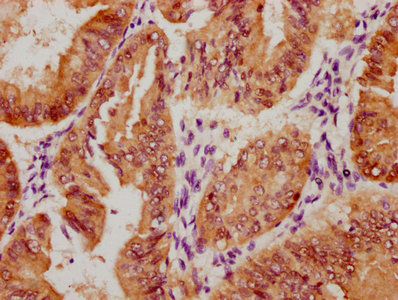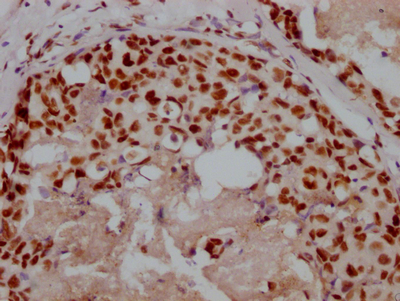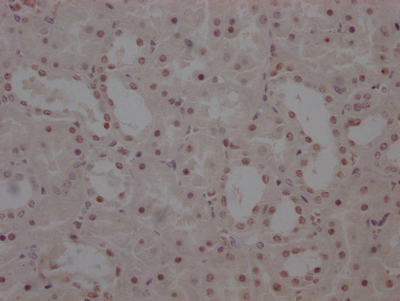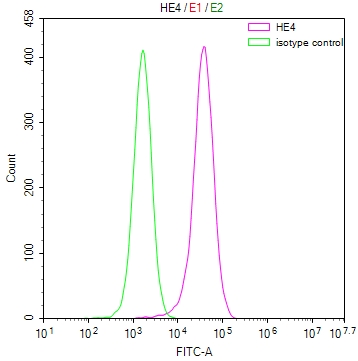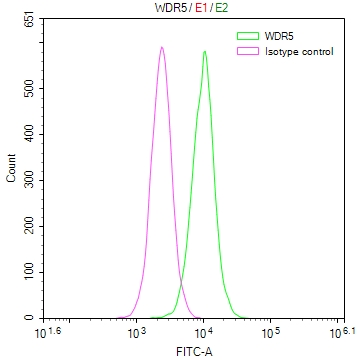SDPR Antibody
-
中文名稱:SDPR兔多克隆抗體
-
貨號(hào):CSB-PA020919GA01HU
-
規(guī)格:¥3,900
-
其他:
產(chǎn)品詳情
-
Uniprot No.:
-
基因名:CAVIN2
-
別名:Cavin 2 antibody; Cavin-2 antibody; Phosphatidylserine binding protein antibody; Phosphatidylserine-binding protein antibody; PS p68 antibody; PS-p68 antibody; Sdpr antibody; SDPR_HUMAN antibody; SDR antibody; Serum deprivation response antibody; Serum deprivation response protein antibody; Serum deprivation-response protein antibody
-
宿主:Rabbit
-
反應(yīng)種屬:Human,Mouse,Rat
-
免疫原:Human SDPR
-
免疫原種屬:Homo sapiens (Human)
-
抗體亞型:IgG
-
純化方式:Antigen Affinity Purified
-
濃度:It differs from different batches. Please contact us to confirm it.
-
保存緩沖液:PBS with 0.02% Sodium Azide, 50% Glycerol, pH 7.3. -20°C, Avoid freeze / thaw cycles.
-
產(chǎn)品提供形式:Liquid
-
應(yīng)用范圍:ELISA,WB
-
Protocols:
-
儲(chǔ)存條件:Upon receipt, store at -20°C or -80°C. Avoid repeated freeze.
-
貨期:Basically, we can dispatch the products out in 1-3 working days after receiving your orders. Delivery time maybe differs from different purchasing way or location, please kindly consult your local distributors for specific delivery time.
-
用途:For Research Use Only. Not for use in diagnostic or therapeutic procedures.
相關(guān)產(chǎn)品
靶點(diǎn)詳情
-
功能:Plays an important role in caveolar biogenesis and morphology. Regulates caveolae morphology by inducing membrane curvature within caveolae. Plays a role in caveola formation in a tissue-specific manner. Required for the formation of caveolae in the lung and fat endothelia but not in the heart endothelia. Negatively regulates the size or stability of CAVIN complexes in the lung endothelial cells. May play a role in targeting PRKCA to caveolae.
-
基因功能參考文獻(xiàn):
- SDPR variants were not associated with major depressive disorder. PMID: 27721187
- Overall, these data suggest that Cavin-2 represents a useful marker for discriminating the degree of differentiation in LPS tumors. PMID: 28865960
- Data found that CVN2 expression was signi fi cantly down-regulated in oral squamous cell carcinoma (OSCC) in vitro and in vivo and that CVN2 overexpression led to decreased proliferative activities through the CVN2/caveolin-1/ERK path- way. Furthermore, high tumoral progression occurred in CVN2-negative patients with OSCC. PMID: 26086332
- Hepatocellular carcinoma patients with lower cavin-2 expression have a relatively poor prognosis. PMID: 27513662
- identification of a novel metastasis suppressor gene, serum deprivation response (SDPR), localized to 2q32-33, a region reported to be associated with significant loss of heterozygosity in breast cancer, is reported. PMID: 26739564
- Cavin-1 and cavin-2 are strongly expressed within caveolae-like structures within liver sinusoidal endothelial cells of the hepatitis C-related cirrhotic liver and cavin-1 would play a critical role in regulating aspects of caveolin-1. PMID: 26086560
- Rather than forming a single coat complex containing the three cavin family members, single-molecule analysis reveals an exquisite specificity of interactions between cavin1, cavin2 and cavin3. PMID: 24473072
- Three genes (LY96, IL8 DPR) were significantly downregulated over time. This finding was confirmed in a validation cohort of stroke patients (n=8). PMID: 25124890
- The cavin family protein Polymerase 1 and transcript release factor, SRBC and serum deprivation response protein were down regulated in breast cancer cell lines and breast tumor tissue. PMID: 21913217
- Study conclude that SDPR is a membrane-curvature-inducing component of caveolae, and that STB-induced membrane tubulation is facilitated by caveolae. PMID: 19525939
顯示更多
收起更多
-
亞細(xì)胞定位:Cytoplasm, cytosol. Membrane, caveola.
-
蛋白家族:CAVIN family
-
組織特異性:Highly expressed in heart and lung, and expressed at lower levels in brain, kidney, liver, pancreas, placenta, and skeletal muscle.
-
數(shù)據(jù)庫(kù)鏈接:
Most popular with customers
-
-
YWHAB Recombinant Monoclonal Antibody
Applications: ELISA, WB, IHC, IF, FC
Species Reactivity: Human, Mouse, Rat
-
Phospho-YAP1 (S127) Recombinant Monoclonal Antibody
Applications: ELISA, WB, IHC
Species Reactivity: Human
-
-
-
-
-


